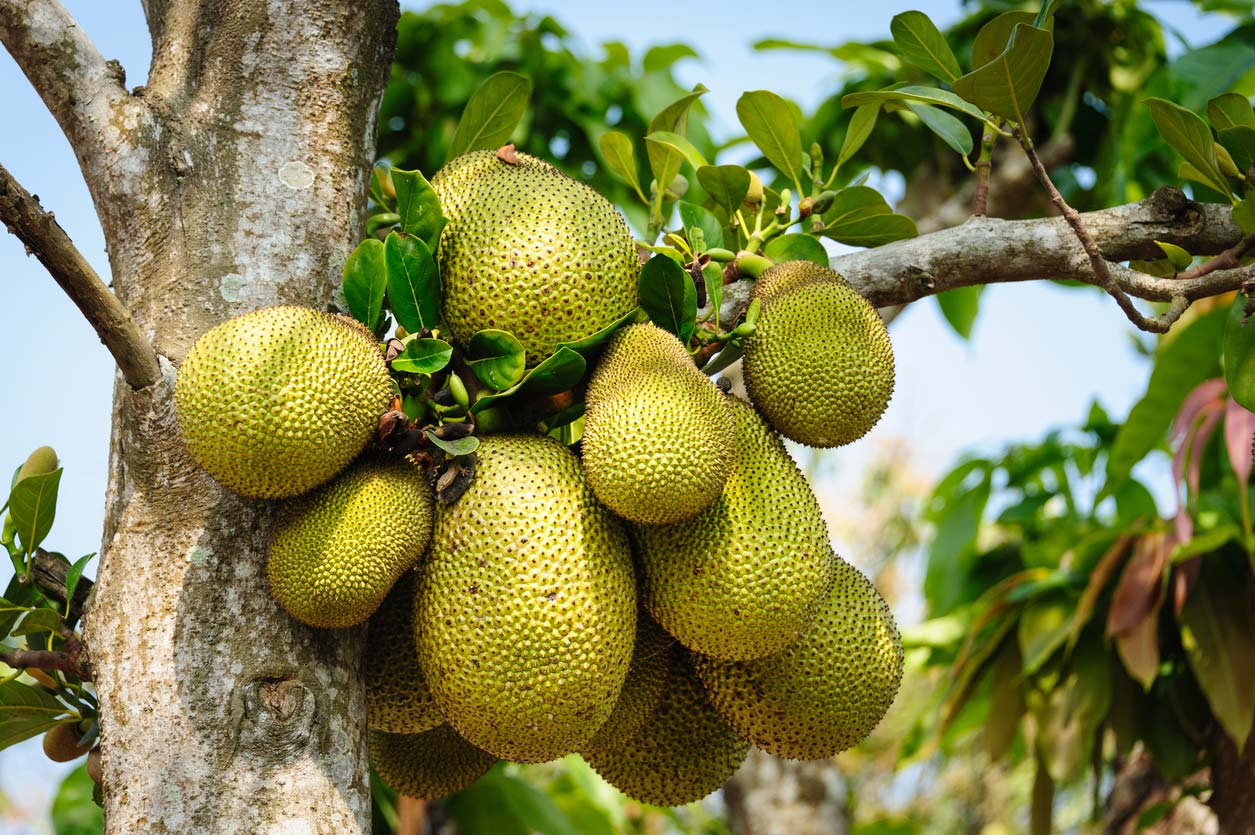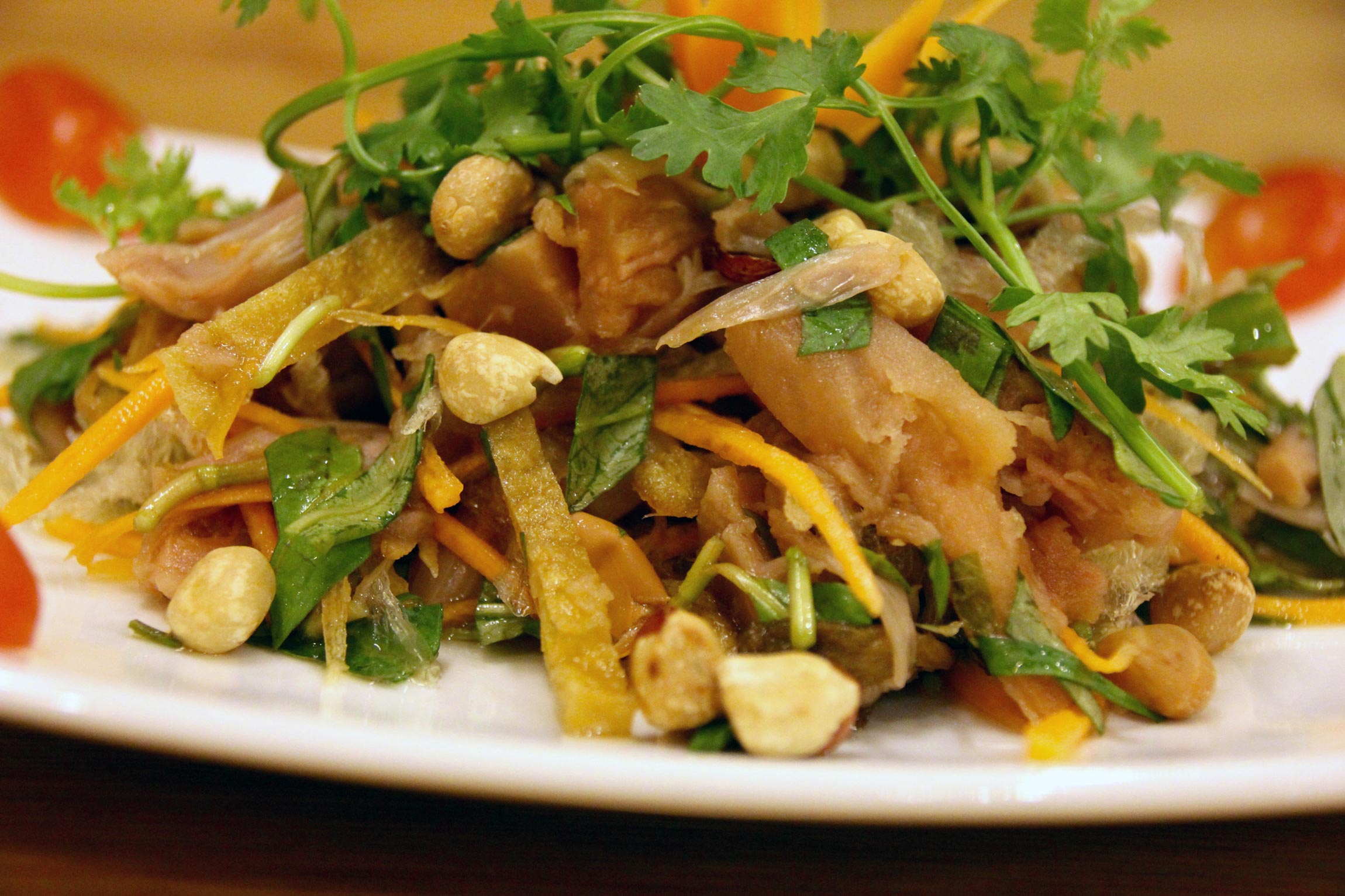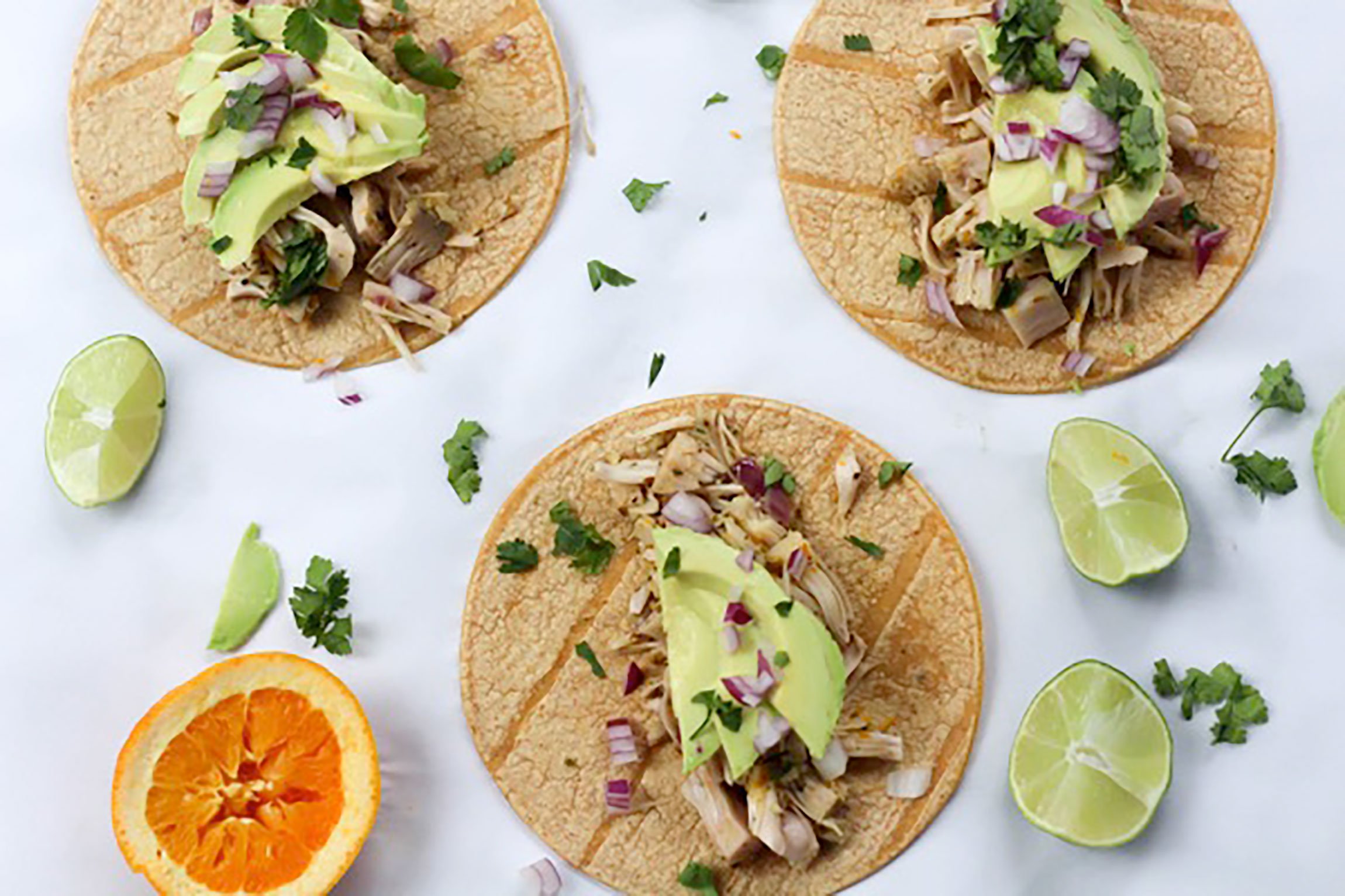Have you heard of jackfruit? One tree can produce up to three tons of food from this huge and utterly unique fruit per year, providing an almost miraculous source of nourishment for people living in tropical countries!
Jackfruit is also increasingly being used in other parts of the world, particularly in the US, as a plant-based meat alternative because the young, unripe fruits soak up flavor well and have a stringy, “meat-like” texture when cooked.
You may have seen it popping up in stores and on menus — for example, jackfruit tacos and BBQ sandwiches are popular ways to prepare it.
But what do you need to know about this food? And should it be something you look for and use in your own cooking?
What Is Jackfruit? Where Does It Grow?

Jackfruit is a species of tree in the fig, mulberry, and breadfruit family.
The plant originated in southwest India, where it grows abundantly. And throughout history jackfruit spread to other parts of India, southeast Asia, the East Indies, the Philippines, Thailand, Malaysia, and Indonesia.
It also grows in Africa and is relatively popular in Brazil and Suriname as well. Jackfruit trees typically grow in tropical and near-tropical conditions, but they can also be produced in Florida, Hawaii, and Australia.
The largest tree-borne fruit in the world, jackfruit can weigh up to 100 pounds and grow up to three feet long. (Though, the average size of the fruit is 10 to 25 pounds.)
Its huge trees produce massive, green, oblong fruits with a bumpy, fleshy exterior. On the inside, it contains many pale-yellow, plump bulbs, which are edible and joined at the core. The seeds can also be cooked, eaten on their own, or ground into flour.
A ripe, unopened fruit has a strong, unpleasant odor. But the pulp of the opened fruit smells sweet.
What Does Jackfruit Taste Like?
Eaten ripe and raw, the taste of jackfruit is sweet and similar to pineapple, mango, and banana.
When it’s unripe, it has more of a neutral flavor, like a potato, and works well in savory dishes.
When it’s unripe, it has more of a neutral flavor, like a potato, and works well in savory dishes.
A great thing about green jackfruits is they don’t have a strong flavor on their own, so they’re able to soak up herbs, spices, and other flavorings.
This allows the fruit to be made into plant-based versions of shredded chicken, pulled pork, or other meat-based meals.
Jackfruit can be made into a wide variety of dishes, both sweet and savory. And the seeds are often boiled or roasted and eaten as snacks. They are similar to chestnuts or macadamia in taste and flavor.
Jackfruit Nutrition

Eating jackfruit isn’t only a fun and meatless way to add something new to your usual meals. It’s also packed with nutrients, including fiber and antioxidants.
And the benefits of this tropical fruit are impressive. One researcher even called it a “miracle” food because it provides so many nutrients and calories.
Two cups contain 310 calories and boast the following lineup of vitamins and minerals:
- Fiber: 6 grams
- Protein: 5.6 grams
- Vitamin A: 20% of Recommended Daily Intake (RDI)
- Vitamin C: 36% of RDI
- Riboflavin: 22% of RDI
- Magnesium: 30% of RDI
- Potassium: 28% of RDI
- Copper: 30% of RDI
- Manganese: 32% of RDI
The seeds are especially nutritious. They are high in protein, potassium, calcium, and iron.
The Benefits of Jackfruit for Your Body
Here are eight ways jackfruit may benefit your health:
- Good for your immune system. Jackfruit contains moderate levels of vitamin C, an antioxidant which helps your body fight free radicals and protects you from colds and other illnesses.
- Improve your digestion. Jackfruit is packed with fiber, which helps improve digestion and prevent constipation.
- May help prevent cancer. Jackfruit contains phytonutrients, such as lignans, isoflavones, and saponins, which have anti-cancer properties. It also contains many carotenoids, which have been found to help protect against cancer.
- Boost your energy levels. Jackfruit has B vitamins, particularly vitamin B6. And it’s high in complex carbs which can give you a boost of energy, without throwing your blood sugar levels out of whack. In fact, clinical trials conducted at Sydney University’s Glycemic Index Research Service have found that raw jackfruit has a lower glycemic load (increase in sugar/blood glucose level) than wheat or rice.
- Help maintain blood pressure and heart health. It also has moderate levels of potassium, which helps regulate blood pressure and reduce the risk of stroke and heart attack.
- Support healthy vision. Jackfruit has vitamin A, as well as beta-carotene, lutein, and zeaxanthin, which helps improve vision and protects eye health.
- Improves skin health and reduces aging. The water content in the fruit helps keep your skin moisturized and youthful. And the antioxidants help slow the aging process.
- Good for bone health. It’s also high in calcium, which strengthens and helps promote healthy bones. The right amount of magnesium helps with the absorption of calcium. And the high amount of potassium helps decrease the loss of calcium.
A Sustainable Choice for a Growing World
With its huge size, nutrient density, and crowd-pleasing taste, jackfruit could be one of the most promising solutions for sustainably feeding the world.
Jackfruit could be one of the most promising solutions for sustainably feeding the world.
Amazingly, one jackfruit tree can grow about 100 to 200 fruits in a year.
Compared to the intensive land and water resources necessary to produce meat, jackfruit is far more efficient as a global food source.
Danielle Nierenberg, president of Food Tank, which focuses on sustainable agriculture, told The Guardian this about jackfruit:
“It is easy to grow. It survives pests and diseases and high temperatures. It is drought-resistant. […] It achieves what farmers need in food production when facing a lot of challenges under climate change.“
Researchers are also aiming to increase jackfruit consumption in India, where the food has fallen out of favor and often goes to waste. Making it a favorite staple food again could help feed millions of people who are facing food insecurity.
Where to Find It
You may be able to find jackfruit as a whole fruit, sliced into sections, packed into cans, dried, frozen, or made into other products.
While your average chain grocer (outside of the tropics) may not sell jackfruit fresh, demand is rising fast and many stores are starting to sell it.
Specialty markets, such as Whole Foods and Sprouts Farmers Markets, will be more likely to have the fruit, or they may be able to order it for you. You can also look at your local Asian, Indian, or Caribbean food stores or find jackfruit products online.
Other names for jackfruit include jaca or chakka (in India), kathal (in Bangladesh), kanun (Thailand), nagka (in Malaysia) or “tree mutton” in Bengali.
Keep this in mind: Whole jackfruits sold in stores are on the sweeter side — versus the canned varieties, which are usually blander.
Canned Jackfruit
Most commonly, the fruit comes in a can and is labeled “young” and “green” — namely because the younger it is, the less sweet it will be.
Canned jackfruit is usually packed with brine, syrup, or water (opt for the brine to avoid added sugars — although you may want to be mindful of the sodium content — or the water if you can find it), and then drain it and cook it any way you want.
So when shopping for canned jackfruit, you may want to look for “young green jackfruit packed in brine”(or salted water) on the label. Or you may be able to find “young jackfruit in water.”
Packaged Products Make Eating It Easy
Jackfruit is also becoming more available through packaged products.
Upton’s Naturals is sold widely (including online from Thrive Market). The company makes jackfruit in a variety of flavors, such as bar-b-que, chili lime carnitas, Thai curry, sweet & smoky, sriracha, and original flavors.
The Jackfruit Company — whose mission is to transform world health, farmer’s livelihoods, and humanity’s eco-footprint for the better — is another option. The company makes an array of jackfruit products with flavors like curry, teriyaki, tex-mex, lightly seasoned, lemon-garlic and bbq, plus prepared bowls, sweet ripe jackfruit, and a “naked jackfruit” product designed for food service.
You may also be able to find dehydrated chips, noodles, powder and other products.
How to Cut It

The idea of cutting into a massive, thick-skinned orb can be intimidating. But it’s doable if you’re willing to put in the work.
Here’s a quick step-by-step video to help you prepare this bulbous fruit.
When selecting a fruit, remember this: Jackfruit is green when unripe, and then, it turns light brown and has a strong fragrance when ripe.
(Editor’s Note: All parts of the jackfruit contain a sticky, white latex “sap,” which can be used as an adhesive. You may want to use gloves or coat hands, knives, and work surfaces with vegetable oil prior to preparation and lay newspaper down if you try to cut into it. And a warning: There have been documented cases of anaphylaxis in people allergic to latex, so you may want to avoid this food if you have a latex allergy or are sensitive to latex.)
How to Cook It
Much like tofu, unripe jackfruit absorbs the flavors it cooks but doesn’t have much flavor on its own. You can add it to a variety of dishes, such as curries, stir-fry’s, and chili, as well as soups, salads, and bowls.
If you’re looking to cook plain, canned jackfruit, the process varies depending on the different recipes.
Usually, you want to start by draining the fruit, and then cooking it until it’s easy to shred, creating a meat-like consistency.
If you want to use jackfruit as a meat alternative, an important thing to consider is that it’s much lower in protein than other meat alternatives — with only about three grams of protein per cup (though this is more protein than most other fruits). So you may want to pair it with protein-rich foods, such as lentils or beans.
Creative and Delicious Jackfruit Recipes
Here are six recipes for using this unique fruit:
BBQ Jackfruit
This recipe is a perfect choice for your summer BBQ party! By cooking jackfruit with your favorite barbeque sauce, it’s an easy choice that is sure to please eaters of every persuasion.
Jackfruit Carnitas Tacos
Whether it’s Taco Tuesday or any other day of the week, tacos are always a winning dish. This recipe uses orange for a flavor pop and pairs the tacos with fresh, healthy add-ons like avocado and cilantro.

Easy Jackfruit Curry
Made with a variety of spices, this dish is full of flavor for an appetizing meal served with quinoa, rice, or other grains. You can leave out the oil and use water instead to make this recipe oil-free.
Jackfruit “Crab” Cakes
This easy-to-make recipe is surprisingly good and similar in texture to the real thing. You can make these cakes without oil if you want (just put them on a cookie sheet, drizzle with lemon juice, and bake in a 375° oven for approximately 10 minutes on each side, or until they’re golden brown and firm to the touch).
Buffalo Jackfruit Dip
Having a party? Here’s the perfect snack. This spicy dip uses jackfruit as a replacement for more traditional chicken versions, and the end result is a healthier-but-still-delicious treat.
Mu Shu Jackfruit Lettuce Wraps
Light and airy, this Asian dish uses traditional spices to create a flavorful end result. You can eat these lettuce wraps hot or cold — they’re tasty either way!
The Final Word on Jackfruit
Jackfruit can be a nutritious and sustainable food that can provide important nourishment in tropical communities. And it offers an interesting way to expand culinary horizons around the world.
You can eat the whole fruit as is or choose products made with young jackfruits, like canned products. But like most foods, eating jackfruit closest to its whole form will give you the most health benefits.
As more people move away from animal products in the U.S. and around the world, jackfruit, with its “meaty” texture, is another, more sustainable (and often less processed) option for plant-based meat alternatives.
Overall, jackfruit can be a healthy and affordable local food option if you live in the tropics. But for those of us in more northern climates, it has to be imported. At Food Revolution Network, we’re big fans of local food. But if we’re going to import anything, it might as well be foods that are nutritious and environmentally friendly to grow.
So unless you live in a region where it grows, jackfruit is not likely to become a staple food for you. But it can be an excellent occasional ingredient for creative meals — and it might even help feed the world.
Tell us in the comments:
- Now that you know, what jackfruit is, what do you think about it?
- Have you eaten jackfruit? How? And what did you think?
- Will you try it if you haven’t already?

Read Next:
Featured Image: iStock.com/bhofack2




